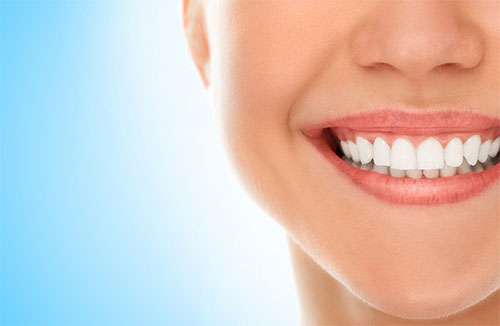What is oil pulling? Oil pulling is a dental health practice that precedes mouth wash by a few thousand years. The act of swishing an oil such as sesame or coconut in one’s mouth has numerous health benefits, especially when Ayurvedic herbs are added to the mix. That’s why we created Daily Swish, a pulling oil that provides the benefits of pure organic oils and herbs that help maintain healthy gums and teeth. Plus, it leaves your mouth feeling minty and fresh!
Oil pulling is not just a daily practice that only the Ayurvedic community loves. Many in the dental and medical communities, along with the American society at large, are picking up on and talking about its many health benefits.1, 2 Though it is a growing movement, oil pulling has been practiced for thousands of years, and for good reason.
Here is what you need to know about the tradition of oil pulling and why you should incorporate it into your daily routine if it isn’t already a part of it.
Oil Pulling Basics
- It’s easy! Simply put about a tablespoon of oil in your mouth and swish it around in your mouth, starting with five minutes and building up to the ideal of fifteen to twenty minutes. Twenty minutes can seem like a long time, but you can shower, brush your hair, get your bag ready, or do any other morning activity (or just relax), while swishing away.
- It does not replace normal hygiene practices. Be sure to brush and floss your teeth, scrape your tongue, and try out the products in our oral health bundle.
- Quite a few researchers are testing oil pulling with interesting findings. It helps maintain a normal mouth pH, normal oral flora, and keeps the teeth and gums healthy.3, 4, 5 In other words, it helps the body’s natural detoxification process. Ayurveda sees the gastrointestinal tract as central to health and the mouth is the very beginning of it. It all starts here!
- Those who have practiced oil pulling can attest to how it can truly be a mouth workout. Swishing for twenty minutes activates the muscles of the cheeks and face, maintaining the tone of facial tissue and muscles.
- Do not swallow! As oil pulling helps with the natural detoxification processes, make sure you spit out the oil and rinse your mouth out with warm water.
To learn more about the benefits of oil pulling, visit our comprehensive oil pulling guide, which will walk you through the process, the history, and benefits!
Which Oil Should You Use?
Daily Swish is not only Banyan’s first pulling oil, it is also one of our most popular and top-selling products. We wanted it to not only be great for your mouth, but to also taste good. To do this, we flavored it with organic peppermint and spearmint essential oils, which leave your mouth feeling sparkly clean afterwards.
We didn’t stop there. At Banyan Botanicals, we believe in the power of botanicals to naturally support our body and its innate intelligence. Many people have been looking at the relationship between triphala (and the herbs in triphala) and the health of the mouth, since it helps in the body’s natural cleansing processes, is a natural antioxidant, and nourishes and rejuvenates the tissues.6, 7 The three herbs of triphala (haritaki, bibhitaki, and amalaki) along with guduchi are all gently cooked into the oil according to traditional Ayurvedic protocols that have been used for thousands of years. Fennel is also added as good harmonizer of the oil, as well as for its refreshing qualities. The final outcome is Daily Swish.
Try it out and see what you think! Even if you’ve been oil pulling for a long time, give Daily Swish a shot for its added benefits and refreshing taste.
References
1 Colleen Oakley. “Should You Try Oil Puling?” WebMD, accessed September 22, 2015. http://www.webmd.com/oral-health/features/oil-pulling
2 Jessica Emery. “How dental professionals can response to ‘oil pulling’ patients.” DentistryiQ. Accessed September 22, 2015. http://www.dentistryiq.com/articles/2014/03/how-dental-professionals-can-respond-to-oil-pulling-patients.html
3 Asokan S, et al. “Effect of oil pulling on plaque induced gingivitis: A randomized, controlled, triple-blind study.” Indian Journal of Dental Research. 20, no. 1 (2009): 47-51.
4 Sood P, et al. “Comparative Efficacy of Oil Pulling and Chlorhexidine on Oral Malodor: A Randomized Controlled Trial.” Journal of Clinical and Diagnostic Research. 8, no. 11 (Nov 2014): ZC18-ZC21.
5 Asokan S, et al. “Effect of oil pulling on Streptococcus mutans count in plaque and saliva using Dentocult SM Strip mutans test: A randomized, controlled, triple-blind study.” Journal of Indian Society of Pedodontics and Preventative Dentistry. 26, no. 1 (2008): 12-17
6 Neeti Bajaj and Shobha Tandon. “The effect of Triphala and chlorhexidine mouthwash on dental plaque, gingival inflammation, and microbial growth.” International Journal of Ayurveda Research. 2, no. 1 (Jan-Mar 2011): 29-36.
7 Nalktari R, et al. “A randomized clinical trial to evaluate and compare the efficacy of triphala mouthwash with 0.2% chlorhexidine in hospitalized patients with periodontal disease.” Journal of Peridontal & Implant Science. 44 (2014):134-140.

